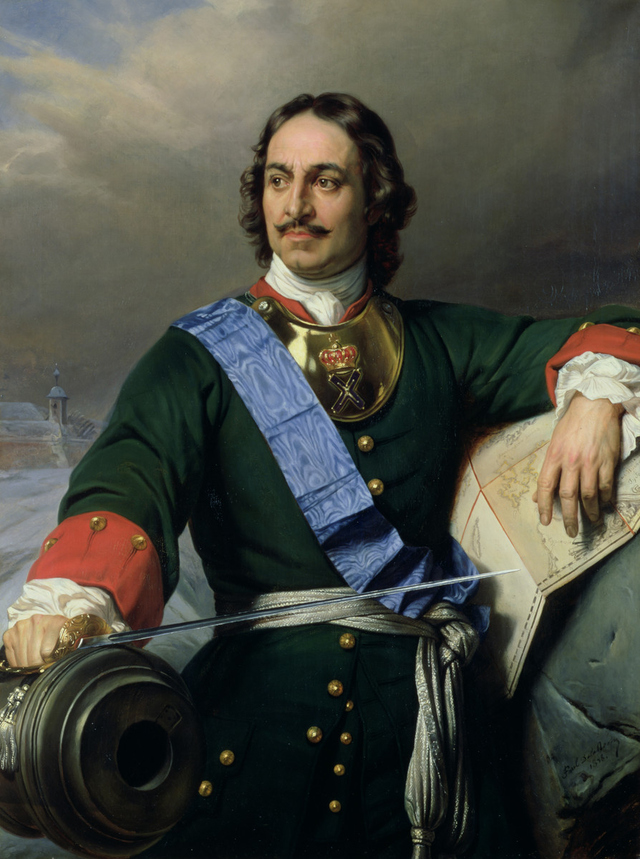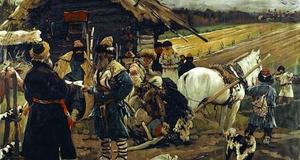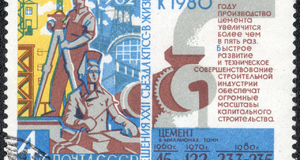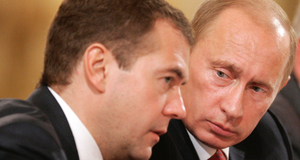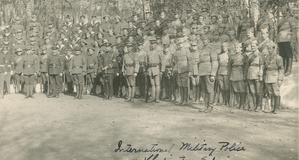The Reign of Peter the Great
By
2011, Vol. 3 No. 01 | pg. 1/1
KEYWORDS:
Peter the Great inherited a score of problems in the administration of his empire. Of course, through his well-known zest and ambition, he tried to solve most of them, and made steps in that direction. However, his actions did not always have the wanted effect. As his own rule shows, and later on the rule of Catherine the Great, the greatest effect of his reforms was that Russian society found itself splintered in classes that could hardly have a dialogue, and even in the context of the same class, factions arose and disputes never ceased. Those reforms that had the greatest impact on the structure of society were the increase of taxation, the setting up of the Synod, the Westernization of the country and people, the bringing in of foreign experts, and the introduction of state service. Along with these, the method Peter the Great used in dealing with his rivals and enemies speaks to the same issue. The introduction of heavy taxation fell more on the shoulders of the peasants and serfs, which contributed to the aggravation of their already precarious situation: “Peter the Great’s tax legislation thus led to the final elimination of the ancient difference between serf and slave,”1 and their forced labor in the swamps of St. Petersburg, “at a cost in lives far exceeding that of Poltava”2 did not help, either. The aggravating situation of the serfs seems unrelated to Raeff’s consideration about the “identity crisis of the Russian elite,” but in fact is an important issue, on which various members of this elite end up take very different stances, thus contributing to this crisis of identity.Another reform was the creation of the Synod, and through it, a system of Church control that soon extended over monasteries and Church possessions and lands, from which Peter tried to get as much money as possible, always needed because of the constant war that he was waging. In addition, he tolerated other denominations. But these reforms in the Church angered not only the Orthodox but also the Old Believers,3 and of both there were between the elite. John Perry testifies to the dislike that even the boyars had against Peter the Great’s reforms by using religious arguments: “[Prince Alexei Golitsyn] declaring it as his opinion that God had made rivers to go one way, and that it was presumption in man to think to turn them another”-in reaction to Peter’s creation of canals and changing the course of rivers4. Along with changes in the Church came changes in traditions and society, which Peter considered to be essential. He tried to Westernize Russia by all means, from the cutting of beards, Westernization of vestments to the change of the calendar,5 to the big society parties that women were now allowed to attend, to the schools of science and technology such as the School of mathematics and navigation and the Academy of Sciences6. However, even if “by the end of Peter’s reign members of the civil service, army, and navy, of the upper classes, and to some extent even of the middle classes […] were shaven and wore foreign dress […], he could not bring Western culture to all of his subjects at the same time,”7 which created a grave imbalance between the elite and the rest of the Russian society, which probably led to a further crisis of identity of the elite. Westernization meant that what was considered “Russian,” part of the culture of the Muscovite society (which Peter hated), was to be shed, and instead the foreign way of manner was adopted. Moreover, Westernization included the call of foreign experts in different domains in Russia. But this did not necessarily create a better climate. The boyars felt threatened by the Tsar’s reforms, the change of the capital from Moscow to St. Petersburg and the involvement of the foreigners: Perry’s account of the opposition of Prince Alexei Golitsyn8 and the delay in payments from Prince Apraxin (Perry confesses that "although this work was performed to their full satisfaction, yet when I demanded my salary and arrears that was due to meI was again further put off by the sdaid Lord Apraxin")9, and the latter’s personal interests interfering with the work at the canals ("had their private interest in it, having a small village in the place that was marked out for the said work")10 speak enough about the overall situation. More importantly, this point is related to the way Peter dealt with those opposing him, his enemies and his rivals. He introduced special taxation for the Old Believers,11 he massacred the streltsy that rebelled against him, sent his wife, Eudoxia, to a monastery to become a nun and he did the same with Sophia, his sister, in order to secure himself the throne,12 he killed his own son, Alexis, because he would not endorse his reforms and executed or forced into hard labor Alexis’ associates.13 Thus, up to this point, Peter’s reforms and behavior toward his own people (as compared to his behavior towards foreigners) did only to enlarge the gap between various classes of the society and even to create major gaps between the members of the same class. The results will be seen already in the reign of Catherine II. However, there was one reform that Peter I instituted and that might have brought members of different classes together and make a dialogue possible-had it been lasting and the impact of the other reforms milder: the compulsory state service.14 Anyone, from any class in society could hold any job and go up on the ladder of titles if he proved to be of use. A good example of this meritocracy was the army: “each draftee, aristocrat and serf alike, similarly work his way from the bottom up, advancing exactly as fast and as far as his merit would warrant”15. Moreover, “entrance into service brought personal nobility, while those of non-gentry origin who attained the eighth rank in the civil service or the twelfth in the military became hereditary members of the gentry”16. Unfortunately, Peter’s compulsory state service did not last long. At the time of Catherine II’s accession to the throne, the Cossacks, pretenders to the throne, Old Believers and Orthodox alike will have complaints about the new monarch, who not only was a woman but also a German princess, with no Russian blood. In spite of all the opponents though, Catherine kept her throne, learnt Russian and everything about Russia, became Orthodox17 and started passing various reforms. The reforms that affected the structure of the society were the ones related to the gentry and the serfs. Catherine the Great continued and deepened the work of Peter I, while sabotaging his work in other matters: she continued the process of Westernization but she gave the gentry new privileges without making the state service compulsory for them, while the serfs were bound to the land, at the mercy of their master and “were forbidden, under a threat of harsh punishment, to petition the empress or the government for redress against the landlords”18. This rift between these two classes caused many problems between the ranks of the elite, since not all the members of the nobility saw serfdom with the same eyes. In addition, this reform was in stark contrast with the ideas that Catherine exhibited at the beginning of her reign, being inspired by the philosophers whom she read and corresponded to (Voltaire, Montesquieu etc.). In her “Instructions,” Catherine professes that “every Individual Citizen in particular must wish to see himself protected by the Laws, which […] should defend him from all Attempts of others, that are repugnant to this fundamental Rule”19. To this end, she wanted to inquire as to the state of her empire and make laws that are in accordance to “the Situation and Circumstances of the People, for whom they are instituted”20. Moreover, Catherine recognized that “the Method of exacting their Revenues, newly invented by the Lords, diminishes both the Inhabitants, and the Spirit of Agriculture”21. Nonetheless, the monarch did not act towards a law “for a more judicious Method of raising their Revenues,”22 that would not tax the peasants as hard, but instead consolidated the gentry and released it from the compulsory state service, which was now compulsory only for the serfs, through their work on the landlords’ estates. It is true that, in order to show that she believed in her own statement “We are created for Our people”23 she formed the Legislative Commission, which was composed of 28 appointed deputies (representing State institutions) and 536 elected deputies (representing the gentry, townspeople, state peasants, cossacks and national minorities),24 with the scope of helping Catherine to form new laws in accordance with the desires of the population. It should be noted from the start that the clerics and the serfs had no representatives.25 The Legislative Commission showed the differences of opinion between gentry and peasants and merchants and also the differences of opinion between various members of the gentry. Thus, the townspeople, through Smirnov ask for the continuation of meritocracy: “I propose that, so as not to enable heirs to enjoy the fruits of someone else’s labor […], noble status and its privileges not be heritable, but that everyone attempt to attain it by merit”26, while Naryshkin and Ignat’ev, both nobles, opposed to this idea vehemently: “We consider the dignity of the noble as something sacrosanct”27. Moreover, the merchants and the nobility fight over economical privileges: “the nobility demanded the right to own peasants […]; the merchants demanded the exclusive right to trade”28. And while the merchants argued that other deputies “propose injuries to the merchants, asking that the well-born nobility, and the peasants as well, be allowed to enjoy the merchant’s privileges,”29 the nobility, through Ignat’ev, argued that “many of the lower clerks, burghers […] buy large villages, multiply factories and plants, and thus limit the ancient nobility’s ability to purchase villages.”30 And along these differences, the voice of the peasants argues against the inequities that happen at their expense: “We, as a people mute and ignorant of the laws […] hire lawyers for the prosecution of our lawsuits, but these deceive and betray both parties,”31 whereas the merchants, argue that “peasant have brought their products into the city […] have the right to sell them retail”32. But these divergences were spread not only between the representatives of different classes present at the Legislative Commission: they were also spread between the members of the gentry. Prince Mikhail Shcherbatov considered that “In the circumstances of Peter’s times” Peter’s reforms “were necessary in order to force the nobles to enter service; but now, […] that the Russian nobility […] is sufficiently inclined toward both service and the sciences, it would seem that the law equating this class with anyone […] should be abolished”33. Ignat’ev and Naryshkin follow the same lines. However, the ancient but poor nobility “stressed their own superior education and higher learning,” although complaining that “the means of giving their own children such an education was not always accessible to all of them”34. In addition, Mezheninov argued that each should “look out for his own well-being, and in this way no one will be ashamed of anything, provided that one does not hinder the other”35. And, of course, there were the voices of those who were much more liberal, such as the ones cited by Alexei Popov, a deputy of the merchants, that asked for the liberty to trade to be extended not only to nobles but also to peasants.36 The picture of Catherine II’s empire, from a societal point of view, thus appears fractured and extremely imbalanced. While her reign “has been considered the golden age of Russian gentry” because of the “lessening and finally the abolition of their service obligations,”37 the position of the serfs worsened,38 the obligations of the state peasants increased and the clergy declined.39 Because Catherine the Great secularized the church’s lands, and gave it in return a very small annual subsidy, the clergy became more and more poor, depending “almost entirely on fees and donations from their usually impoverished parishioners”40. Moreover, the government tried to stimulate the initiative among the merchants “by such means as the creation of guilds and the charter of 1785 granting urban self-government,” but all these initiatives failed to stimulate the merchants as they had been planned to do.41 Lastly, the disagreements inside the Russian elite-for and against the reforms of Catherine, for and against Westernization, for and against freedom of peasants, for and against merchants’ exclusivity to trade-added fire to the fuel of disputes raging in Catherine’s society, albeit in hushed tones, so as not to awaken the censorship. In conclusion, Peter the Great and Catherine the Great seem to have been aiming at the same core: to bring Russia to the fore-front of European politics. And in doing that they spared nothing. Peter started the process of Westernization and Catherine continued it, both raising numerous voices against them, voices of Russians who considered that what is Russian is to be preferred to anything foreign. Moreover, the Westernization was unequal, only the members of the gentry profiting of it and the introduction of schools and universities, which created a further rift between the gentry and the rest of the population. In addition, even between the members of the gentry there were unequal opportunities, since some were poor and could not send their children to school, as Sergei Solov’ev cited the requests of the ancient but poor nobility at the Legislative Commission of 176742. Further on, the two monarchs upset their people even more when they greatly reduced the power of the Church and impoverished it. Also, their continually increase of taxes and thus burdening of peasants did nothing but worsen the latter’s situation. Nonetheless, it should be noted that Raeff’s opinion that “the effect of Peter the Great’s reign was to tear Russian society apart” is applicable only in a certain measure to Peter and, in fact, more so to Catherine the Great’s reign. Although Peter the Great’s reforms did have the effect mentioned by Raeff, his reform of instituting state service left a door open for dialogue between different classes of the society. Because of this, Catherine II’s reign is the one who really led to the “legacy of uncertainty and insecurity that ultimately led to an identity crisis among the Russian elite,” who found herself stranded between various opinions, many times completely opposite, and had no way of dialogue, since the strengthening of serfdom and the complete authority of Catherine and of the gentry left no venues for dialogue nor for any resemblance of equality between people, in utter contrast with the ideals and ideologies of the age-the Enlightenment that Catherine herself professed in her “Instructions.” ReferencesRiasanovsky, Nicholas V. and Steinberg, Mark D. A History of Russia. 7th ed. New York: Oxford University Press, 2005. Riha, Thomas ed. Readings in Russian Civilization. Vol. 2, Imperial Russia, 1700-1917. Chicago: The University of Chicago Press, 1969. Endnotes1.) Nicholas V. Riasanovsky and Mark D. Steinberg, A History of Russia, 7th ed. (New York: Oxford University Press, 2005), 217. 2.) Ibid., 221. 3.) Ibid., 215. 4.) Thomas Riha, ed., Readings in Russian Civilization, vol. 2, Imperial Russia, 1700-1917 (Chicago: The University of Chicago Press, 1969), 235. 5.) Nicholas V. Riasanovsky and Mark D. Steinberg, A History of Russia, 7th ed. (New York: Oxford University Press, 2005), 204. 6.) Ibid., 219. 7.) Ibid., 219. 8.) Thomas Riha, ed., Readings in Russian Civilization, vol. 2, Imperial Russia, 1700-1917 (Chicago: The University of Chicago Press, 1969), 235. 9.) Ibid., 236 10.) Ibid., 237. 11.) Nicholas V. Riasanovsky and Mark D. Steinberg, A History of Russia, 7th ed. (New York: Oxford University Press, 2005), 215. 12.) Ibid., 204. 13.) Ibid., 220. 14.) Ibid., 217. 15.) Ibid., 212. 16.) Ibid., 218. 17.) Ibid., 235. 18.) Ibid., 244. 19.) Thomas Riha, ed., Readings in Russian Civilization, vol. 2, Imperial Russia, 1700-1917 (Chicago: The University of Chicago Press, 1969), 253. 20.) Ibid., 235. 21.) Ibid., 254. 22.) Ibid., 254. 23.) Ibid., 255. 24.) Nicholas V. Riasanovsky and Mark D. Steinberg, A History of Russia, 7th ed. (New York: Oxford University Press, 2005), 240. 25.) Ibid., 240. 26.) Thomas Riha, ed., Readings in Russian Civilization, vol. 2, Imperial Russia, 1700-1917 (Chicago: The University of Chicago Press, 1969), 258. 27.) Ibid., 258. 28.) Ibid., 258. 29.) Ibid., 259. 30.) Ibid., 257. 31.) Ibid., 259. 32.) Ibid., 259. 33.) Ibid., 257. 34.) Ibid., 258. 35.) Ibid., 259. 36.) Ibid., 259. 37.) Nicholas V. Riasanovsky and Mark D. Steinberg, A History of Russia, 7th ed. (New York: Oxford University Press, 2005), 262. 38.) Ibid., 261. 39.) Ibid., 262. 40.) Ibid., 262. 41.) Ibid., 263. 42.) Thomas Riha, ed., Readings in Russian Civilization, vol. 2, Imperial Russia, 1700-1917 (Chicago: The University of Chicago Press, 1969), 259. Suggested Reading from Inquiries Journal
Inquiries Journal provides undergraduate and graduate students around the world a platform for the wide dissemination of academic work over a range of core disciplines. Representing the work of students from hundreds of institutions around the globe, Inquiries Journal's large database of academic articles is completely free. Learn more | Blog | Submit Latest in History |

